Dillon just released the XL-750: an updated version of their popular 5-station XL-650 press (see my complete overview of the XL-750 HERE). If you have a Dillon XL-650, you may be wondering exactly what all of the differences are between the XL-650 and the XL-750. I’ll cover all of that in this article!
Summary of Differences
Priming System Updates
The priming system on the Dillon XL-650 used a unique rotary feed system I like to call the “telephone dial”. Primers are picked up as the dial rotates, and are fed continuously. For the XL-750, Dillon adopted what they call a “linear priming system” (I call this slide-bar priming) which has two advantages:
- The primers are fed on-demand rather than continuously. This prevents primers from being kicked out when you are cycling the press but not continuously loading (such as during die setup or press run-up/run-down).
- The stack of primers in the priming tube has a safe separation from the priming station (where a primer detonation may very rarely happen on any press)
Indexing System Updates
For the XL-750, Dillon made a few changes to the indexing system to make it operate more smoothly, and to reduce the accumulation of debris in key areas. This involved the addition of a roller to ride against the indexing cam, and moving the indexing pawl.
Here’s the XL-650 indexing system components: (top view)
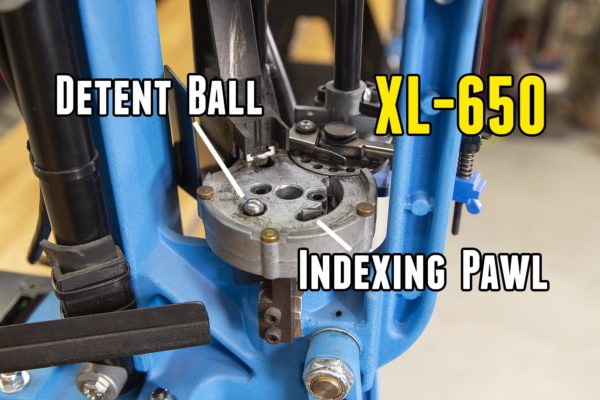
And here’s the XL-750 indexing system components (top view):
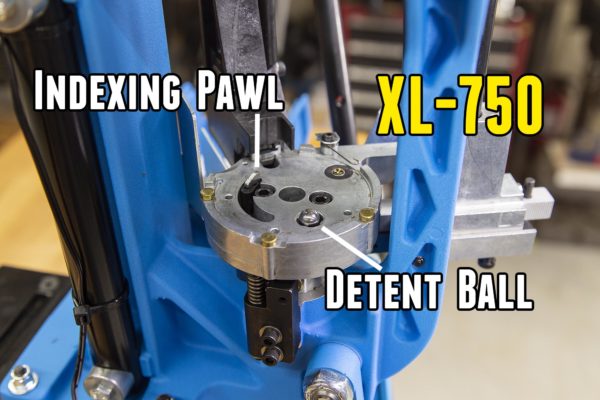
From my experience so far, I can tell you the XL-750 indexing system is smoother than the XL-650! This helps for short cases like 45 ACP where powder spillage is always a concern…
Press Frame Mass
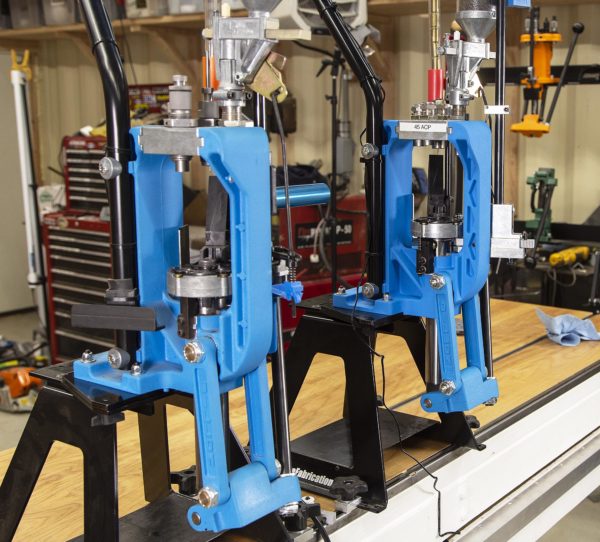
The Dillon XL-750 (left above) has about 15% more mass and a new design that enhances stiffness and strength compared to the XL-650 (right above). You can most easily tell the difference when looking at the left-hand side of the press on the main vertical member.
Pivot Pin Zerk Fittings
On my XL-750, I noticed that Dillon had put zerk fittings on the linkage pivot pins. Now that’s nice! I’m not sure if they added this before the XL-750, or if it was new for the XL-750, but I like that kind of convenience a lot!
The XL-750 is a worthy upgrade over the XL-650. Both are great machines, but personally I really like how the priming system works on the XL-750. Do you have thoughts? Please leave a comment below!
Get your own XL-750
If you want to get your own XL-750, you click here:
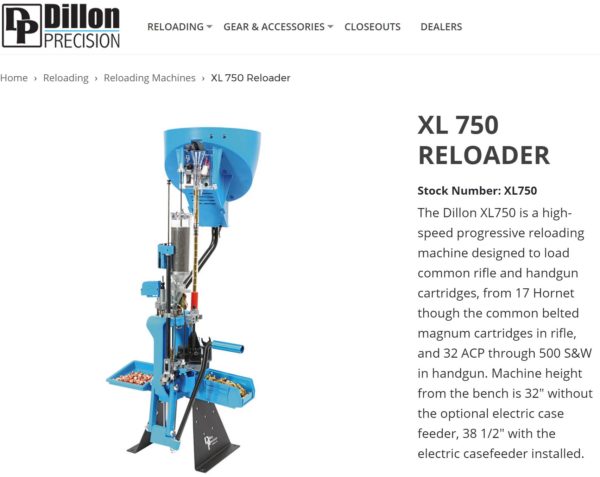
XL 750 Reloader on dillonprecision.com
Don’t miss out on Ultimate Reloader updates, make sure you’re subscribed!
Thanks,
Gavin
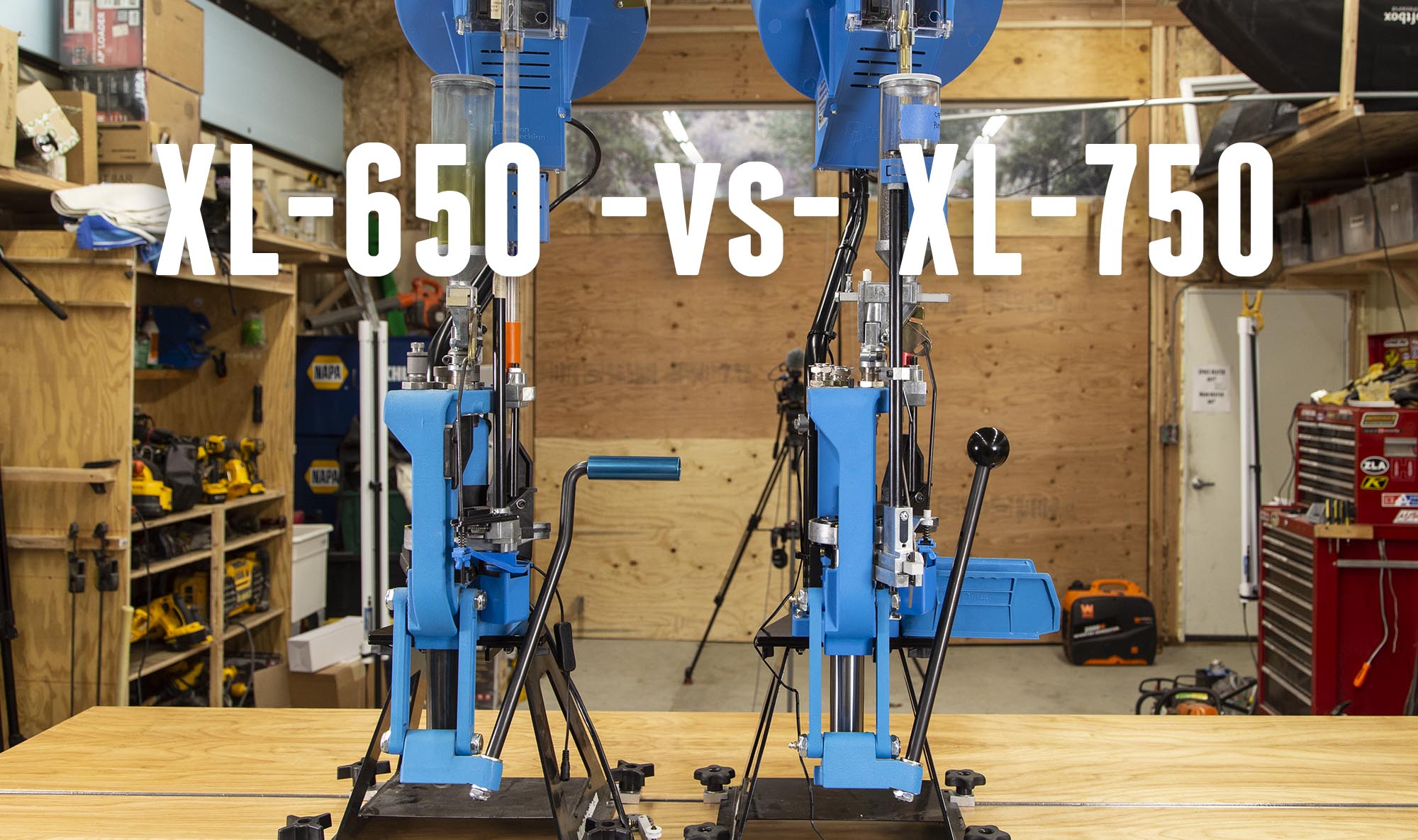


















































































Great information, I own a 650, it does have the zert fitting, it is only about 4 years old. You do a great job of sharing your knowledge, I’ve been reloading sense I was in junior high school, you always have something new for me to add, especially with the Dillon machines. Thank you for a great show.
I own a Dillon XL650 purchased on 2/9/19. It has zerk fittings on the pivoting arms, so apparently that was an upgrade on later 650’s. I absolutely love my Dillon press. It’s a major upgrade to my previous Lee indexing press. I’m seriously considering a 750 now so I can keep 2 presses dialed in on my favorite calibers. Thanks again for all your work and the videos!
Hi, I have an XL650 and you can upgrade the unit to have zerk fittings, it’s a little work to change over, but not bad. Nice video.
Also, I just obtained a 30-06 rifle and am looking to buy as single stage press. I saw your review of all 14 presses and am thinking of buying a Lyman Brass Smith Victory. Can you tell me if you had any issues at all with it? I have heard some issues about the priming system.
The Dillon will do 30-06 nicely. Get the magnum powder bar or manually drop the powder.
Under “Press Frame Mass” you star the “XL-750 (left above)” and “XL-650 (right above)”, that should be reversed the 650 is on the left and the 750 is on the right in the image.
Good video but many questions are unanswered. Can the new primer system and other changes be installed on the 650 to upgrade at least some of the changes and alleviate existing problems?
I would like to have this answered as well, i have loading thousands rifle and pistol shells with no issues with the priming system on the 650, then all of a sudden started having issues with it, always kept it clean. So yes i would like to know the answer.
me to on the upgrades.
It sounds like the 750 has refinements to the 650. I’ll keep my 650. It has served me well loading over 100,000 rounds of pistol ammo
So, essentially, Dillon has copied the Hornady LnL AP priming and indexing system…